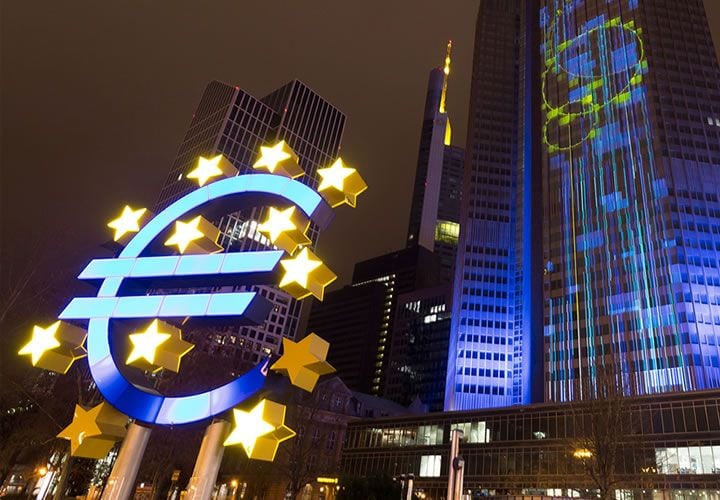Euro to Reach 1.17 Against US Dollar by May, ECB Seen Abandoning Targetting Lower Exchange Rate

Swiss lender Credit Suisse forecast the euro to dollar exchange rate to rise to 1.17 by year end due to a policy shift by the European Central Bank away from targeting exchange rates.
Mario Draghi’s admission that the ECB would not necessarily keep slashing interest rates could be part of a shift by the ECB away from cutting rates and trying to devalue the euro.
Rather, the ECB will likely concentrate on credit easing as it would be a more effective channel to boost the Eurozone economy suggests Shahab Jalinoos, Head of Global FX strategy at Credit Suisse.
“In our view the key catalyst for the reversal was ECB chief Draghi's suggestion that the ECB is close to the end of the road in terms of pushing further on negative rates as a policy tool. We have argued a shift in the policy mix for further easing away from negative rates (previously seen as targeting a weaker currency as a key objective) towards credit easing can be viewed as a potential positive for the EUR,” says Jalinoos in a note to clients
Without the ECB trying to push the euro exchange rate lower, the risk of further down-side for the currency is limited.
Credit Suisse see further upside for the pair potentially coming from dollar weakness on increasing chances that an anti-establishment candidate such as Donald Trump will win the US Presidential election.
Credit Suisse describe such political sources of risk as a ‘Trumpxit’ - the possibility that Donald Trump might win the election – and that this will weaken the dollar in the short-term, due to concerns the his policies will force the US to withdraw from the global economy.
Credit Suisse now forecast the euro to dollar exchange rate to rise from its current levels to 1.17 by May 9 2016.
Diverging Outlooks as Competitor Sees Euro Falling to Parity
Of course, not everyone in the analyst community are thinking the same way.
Credit Suisse’s forecasts diverge noticeably from those of investment bank Morgan Stanley, who recently resurrected their bearish call for the EUR/USD to reach parity.
Once a popular call amongst analysts the belief that the EUR/USD would reach a 1:1 exchange rate has since largely been scrapped in the wake of the euro's stubbornness.
Systemic weakness in the Eurozone banking system is seen as a major reason for their bearish opinion of the euro.
Analysts at the bank say a triple-witching of balance-sheet build-up of non-performing loans, narrow credit spreads due to the ECB’s policy of negative deposit rates, and weak credit transmission to the wider economy is bad for Euro-zone banks and generating a negative outlook for the currency.
Their forecast is for EUR/USD to fall to 1.06, 1.03 and 1.00 at the end of Q’s two, three and four respectively.
As Euro Reaches 1.13 Gains Will be Harder to Come By
The achievement of the 1.17 target forecasted by Credit Suisse will have to content with some incredibly strong resistance in the market.
The EUR/USD is through the seven month resistance line at 1.1308 and is approaching the February high at 1.1377.
Above 1.13 expect buying interest to increase substantially as traders look to bet on a return to weakness.
"We look for the market to now struggle. We note the 13 count on the 240 minute chart and if not already done so we would tighten stops on longs/exit. Above here lie the September and October highs at 1.1460/95," says Karen Jones, analyst at Commerzbank in London.
Protection to the downside is provided by minor support at 1.1218 ahead of further support at 1.1060 which is the December high.
"This guards the bottom of the range at 1.0808," says Jones.




